Artist James Perkins: ‘land art was ripe for me to make a contribution’
Fire Island-based artist James Perkins transforms silk sculptures into forces of nature. Here, he discusses the future of land art, belonging, and living in a Horace Gifford-designed modern masterwork
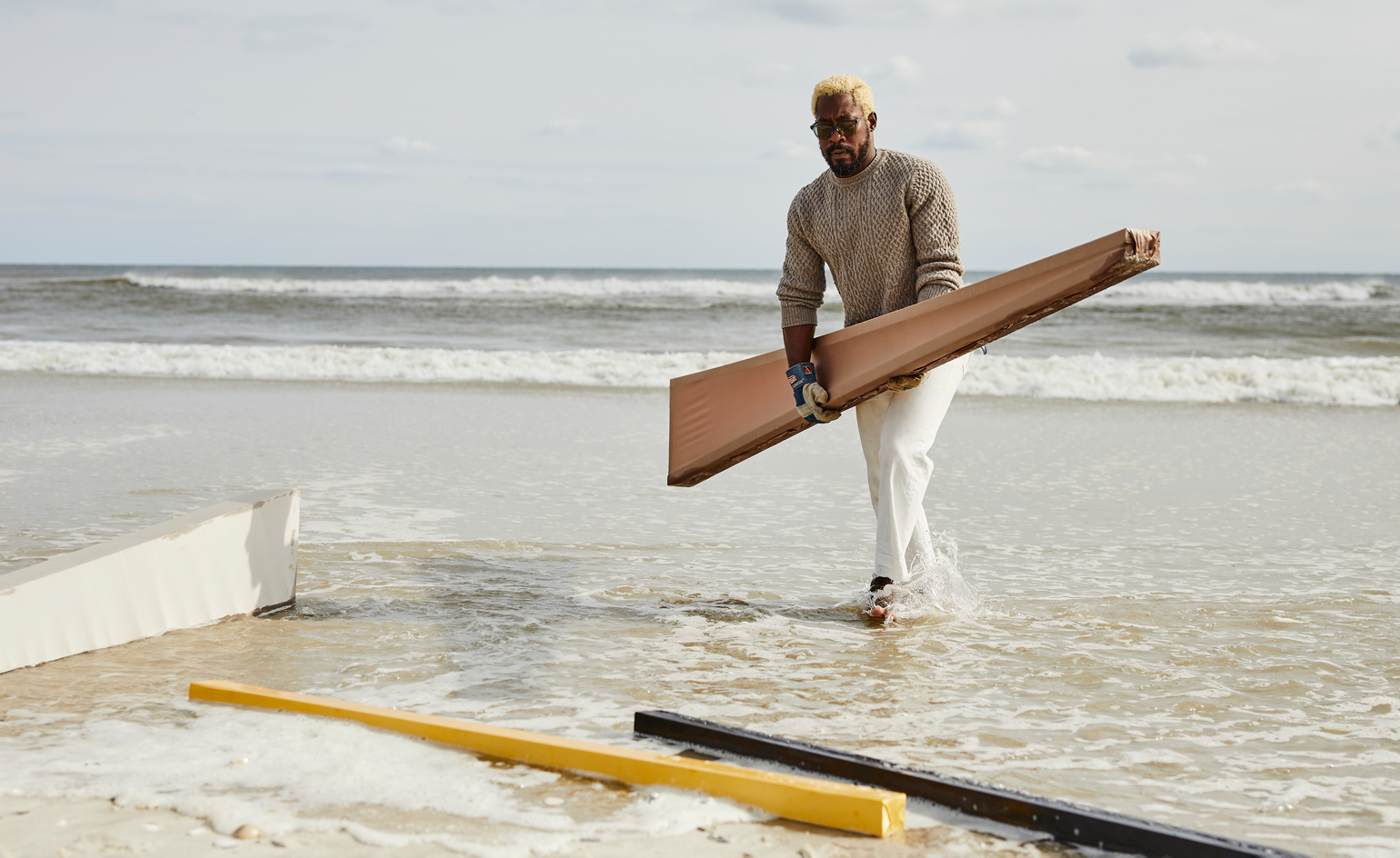
At a time when things feel so unstable, artist James Perkins’ silk totemic sculptures ground us to the earth and celebrate the beauty of time and space. In a meditative process that can take up to two years, Perkins uses nature as his paintbrush. He allows the sea salt, ocean spray, sun, rain, and hurricane-force winds to weather his silk sculptures – even burying some in the sand – unveiling dynamic, layered, and utterly transformed totems.
Following in the footsteps of the great land artists, like Michael Heizer, James Turrell, and Walter De Maria, Perkins’ silk totems possess power far beyond their individual components. Despite deceptive simplicity, land artists create complex, soul-searching natural art to ask viewers to contemplate what they see and who they are.
Perkins’ work stands apart from the greats as his time-based land art installations, which he calls post-totem structures, question the lines between sculpture and painting, monumental land art and temporary works, and human intervention and nature.
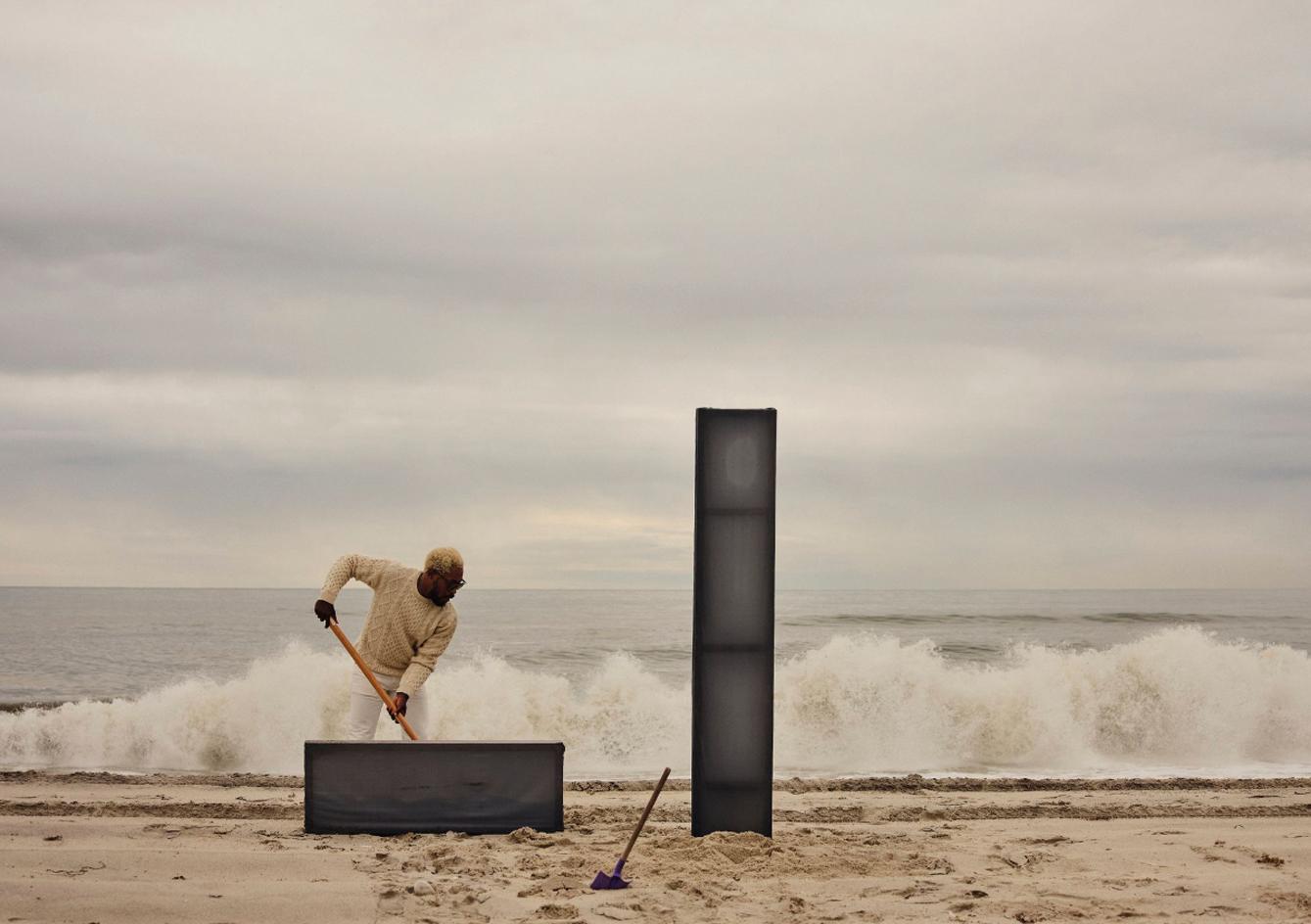
Perkins’ use of silk is delicate and deliberate but his process transforms the sculptures into totems that possess the power to challenge perceptions of age, form, power, and permanence. A Yale graduate, former Wall Street analyst and magazine publisher, and now artist, Perkins has developed an intellectual and soulful approach that creates a powerful pull for viewers.
Just as his Fire Island, Horrace Gifford-designed modernist home stands boldly over the Atlantic Ocean, so too do his sculptures absorb, reflect, and meet the forces of nature. Perkins is firmly rooted in the here, making him the artist we all need now.
His exhibition, ‘Burying Painting’, is on view at Hannah Traore Gallery, New York until 30 July 2022. Here, Perkins discusses land art, process and belonging, and his Fire Island home...
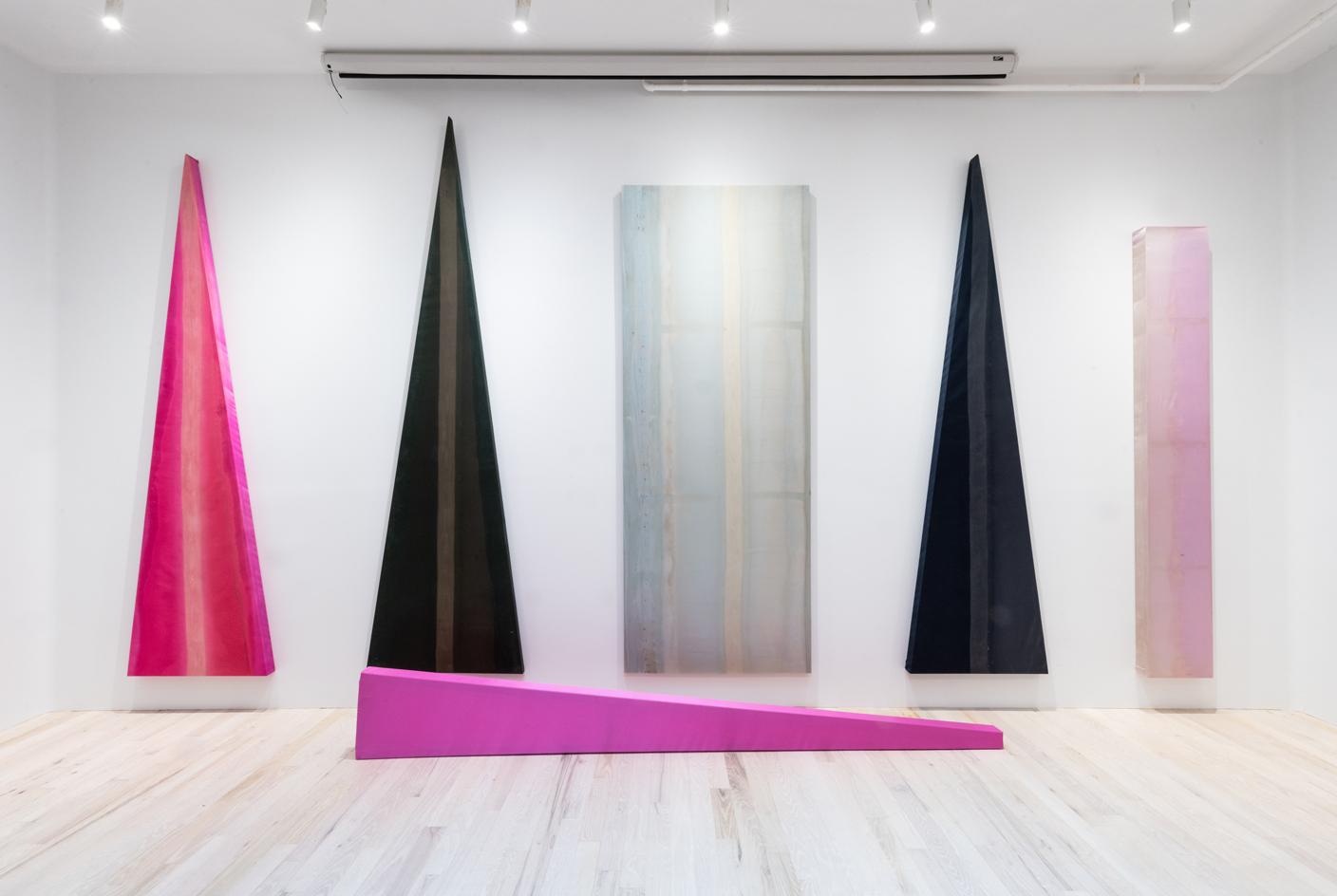
Installation view of James Perkins' ‘Burying Painting’, is on view at Hannah Traore Gallery, New York until 30 July. Photography: Adam Reich
Wallpaper*: Your work is inspired by the great land artists, like Michael Heizer, James Turrell, and Walter De Maria, as well the legendary sculptors like Donald Judd and Dan Flavin. How does your work converse with these artists and also advance the conversation?
James Perkins: Don’t forget Richard Serra! They were all my professors and best friends, whether they knew it or not. We have a long history of great painters and other traditional mediums that we don’t take for granted. New artists continue to paint and new viewers continue to engage with traditional forms and mediums.
But for me, philosophy, perception, and medium invention present the most exciting foundations in art. I felt land art was ripe for me to make a contribution. I wanted to try to be one of the first to explore what the next generation of this land art approach would look like.
Wallpaper* Newsletter
Receive our daily digest of inspiration, escapism and design stories from around the world direct to your inbox.
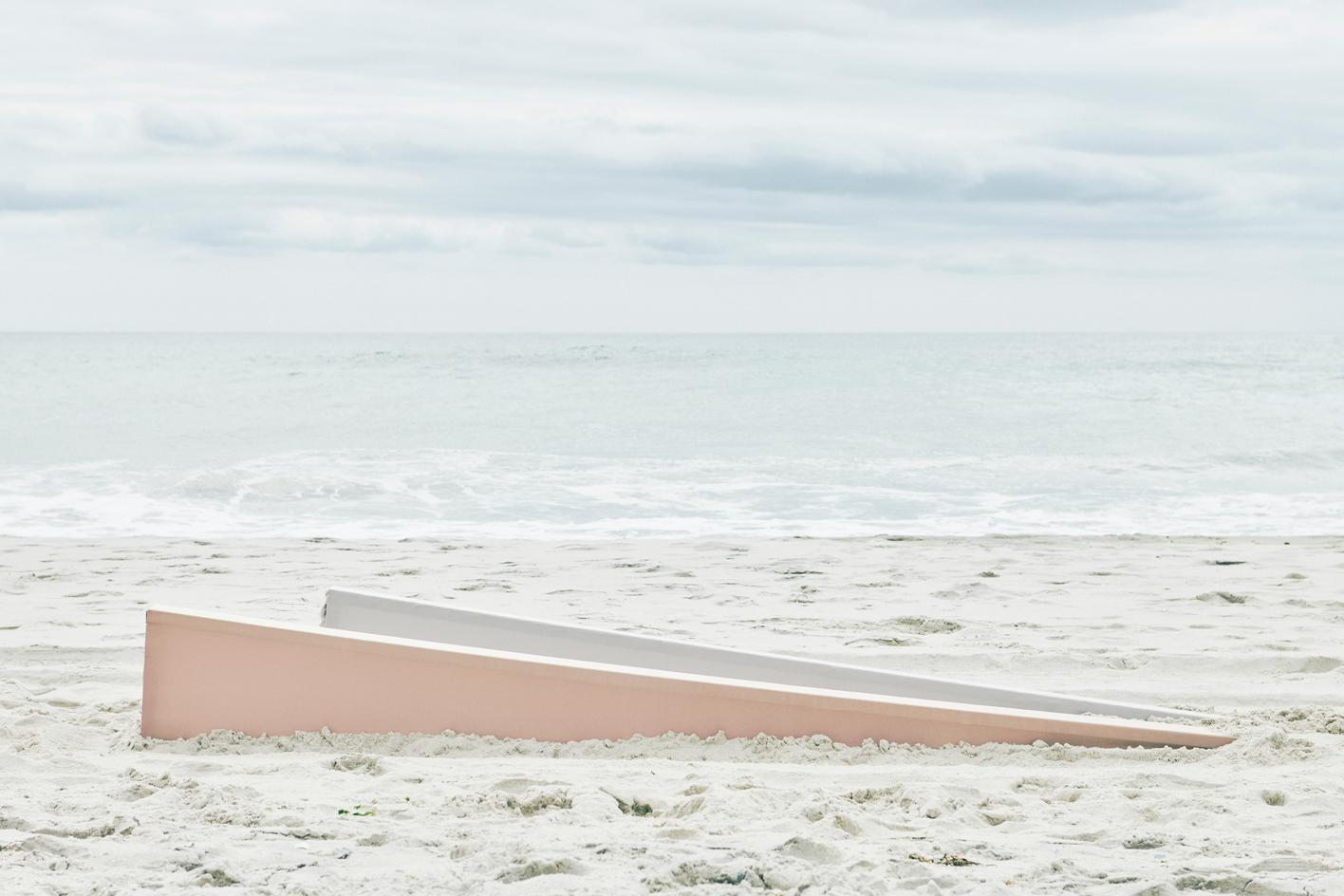
It was very important to me to be both involved with the great land artists’ findings, as well as to advance them. I feel like my work is successful when it draws your attention back to nature. They are monumental works, yet they are not monuments. They are conceived to be removed, to age, to change. And then, I start anew. Nothing stays the same. I’ve always felt like there was a bit less ego in this type of land work. I am not attempting to stake some claim or false permanence.
It is all biodegradable. I have managed to make the earth the whole of the materiality. The silk, the rain, the wood, the salt, the sand, and even the wind are literally all part of the work. This type of literalness is grounded in a shared experience that we all have.
I like the concept of grounding and these works have been grounded to the highest degree. Their beauty is a result of their resilience, their age, and weathering storms. Society has this erasure-like experience with age, but it is the exact opposite. That is when the beauty begins. These works go from outdoor sculptures to indoor paintings. They may even continue to change over a collector's lifetime. That is perfect. The work is still working, documenting time and holding stories of change, of life.
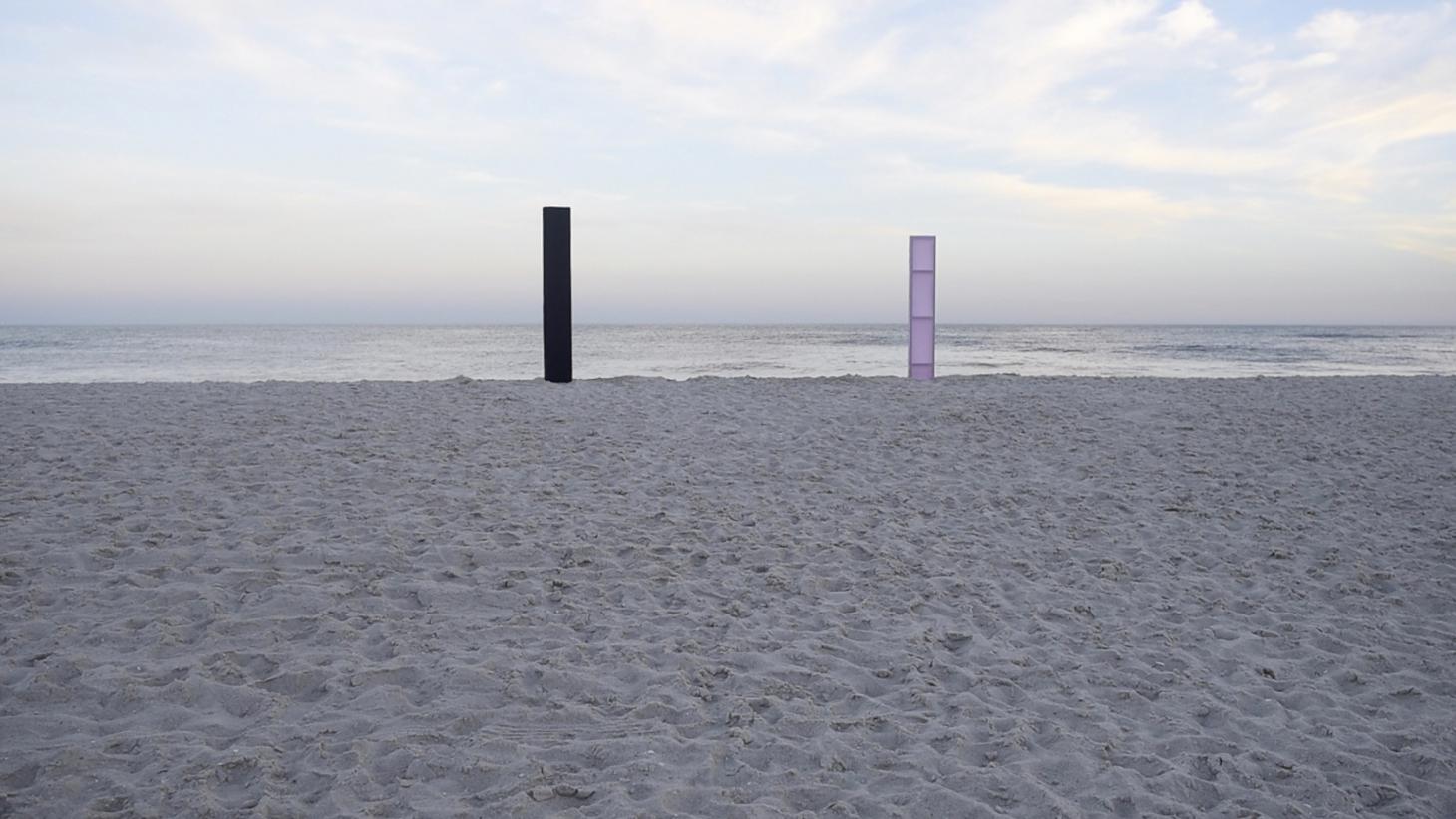
James Perkins 'post-totem' beach installation. Photography: James Perkins
W*: Many of your work titles reference opera and literature. How do these works inspire your art?
JP: Musicians and writers have greatly influenced me and my work. Miles Davis is my spirit animal!
Miles expertly navigated the space of not being Black enough in Harlem while not White enough at Juilliard. He did this with this natural style and pride, all while innovating. The way he collaborated with jazz pianist Gil Evans and thought about space and time as a building block is very much in my work.
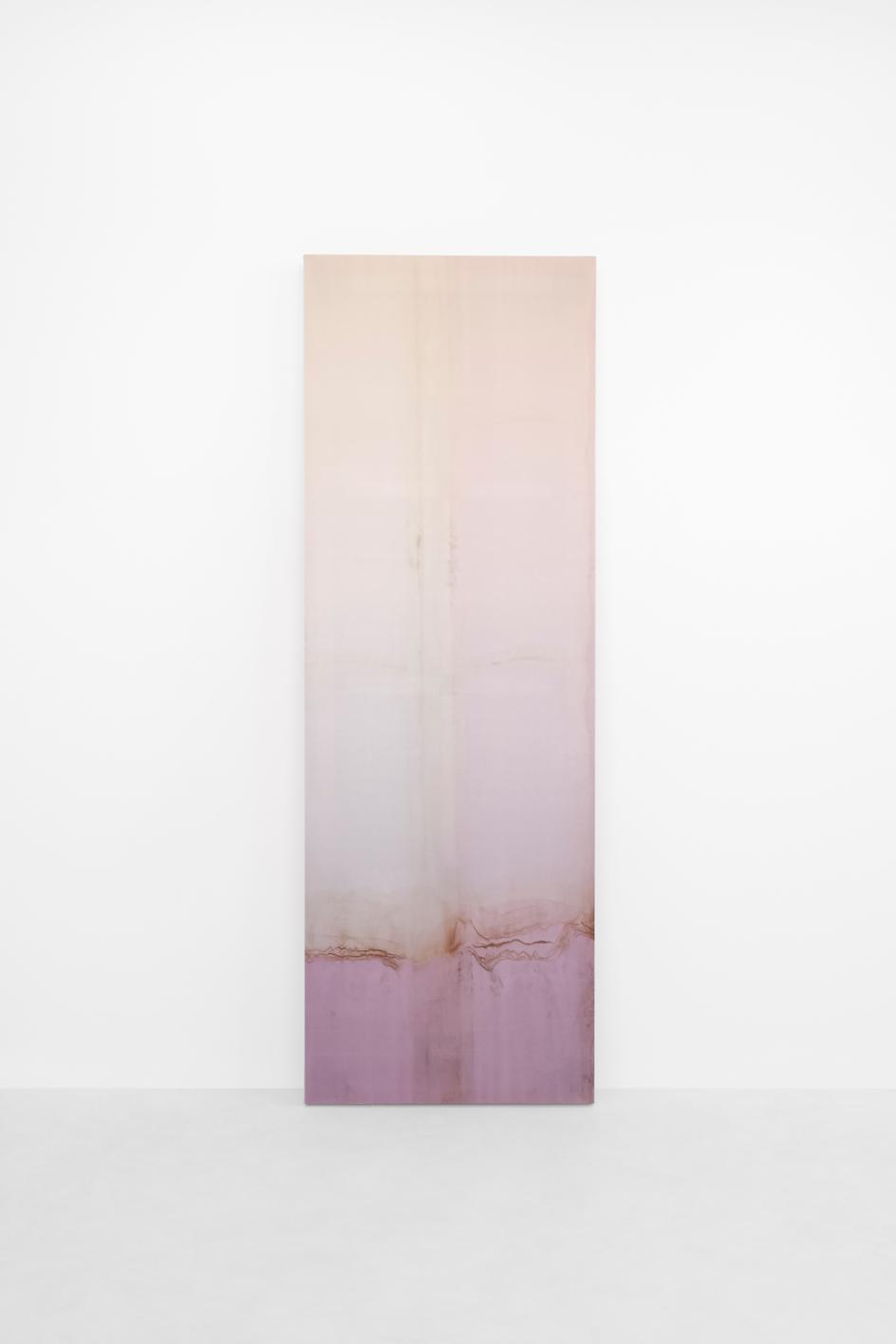
James Perkins, Tamarisk. Photography: Josh Marten, 2018
Additionally, Miles was also very much a futurist. He didn’t want to wait for the Civil Rights movement to end before he had a Ferrari. He wanted one now. I get that. My goal is to experience the very best of culture and to contribute to it. One does not need to explain or justify their existence. Once you move past spending time on this, you create space for yourself.
Opera librettos are also dear to me because they are still so relevant. I can hear opera in pop and hip hop music today. La Bohème brings me to tears when I see it every year. The life of an artist can be very challenging as we constantly question how to live. La Bohème answers that question simply: ‘E come vivo? Vivo (translation: ‘How do I live? I live!’).
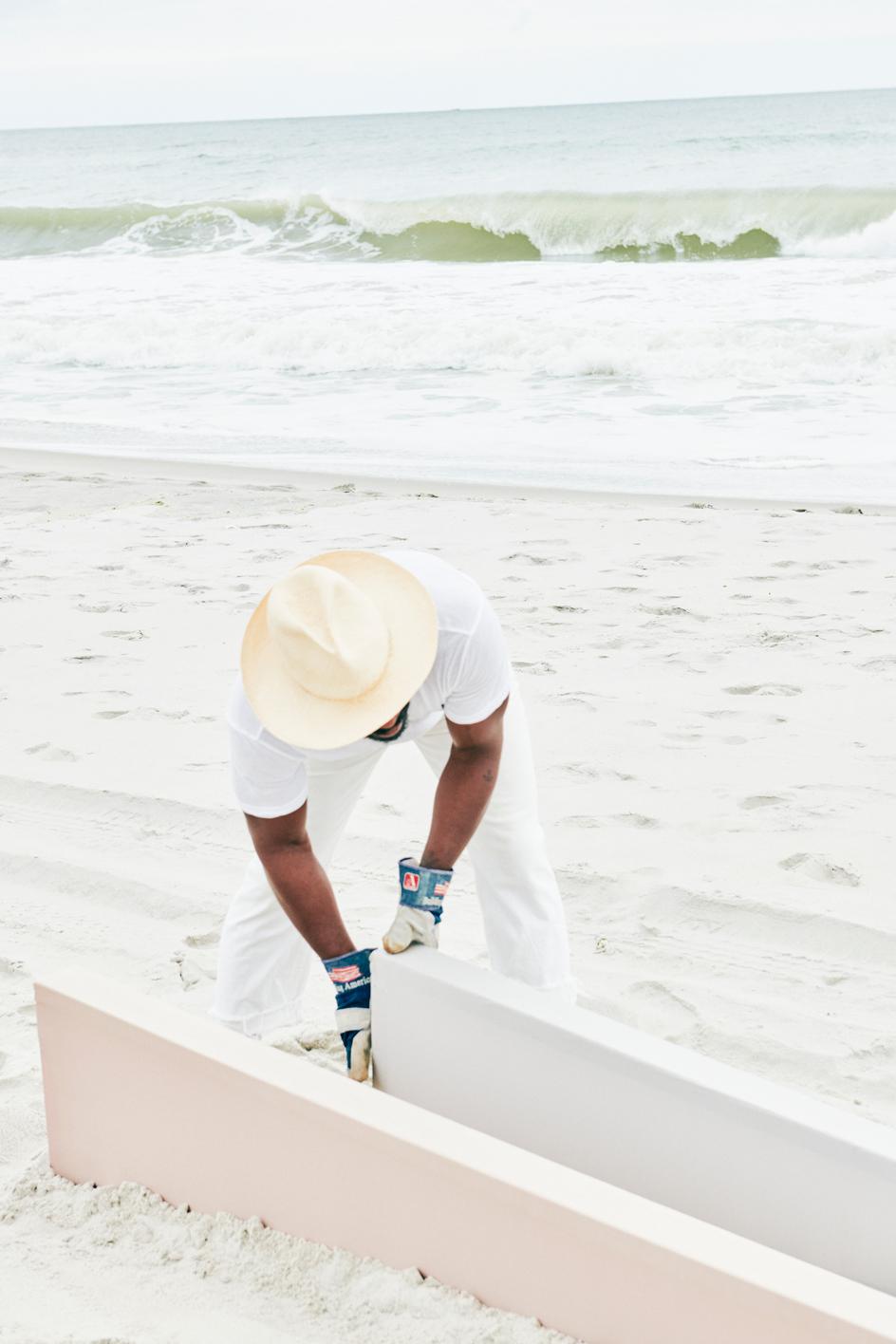
W*: Your process seems as essential as the end product. What made you expose your first work to the elements?
JP: I am a process artist, for sure. The process occurs to me first before I make any kind of consideration of the final artefact. I feel privileged that my work conveys some beauty, but I believe it is just a mirror of the beauty of nature I am so involved with. In graduate school, I studied photography but it wasn’t physical enough for me. One year, I vowed not to take any more photographs but to still create work.
My inspiration, however, began with an image I love of my father coaching my little league basketball team. I was trying to resolve the principles I learned in his coaching uniform versus my last uniform, a suit and tie. I created these sculptural works of basketball jerseys made from my old Loro Piana suits and Ferragamo and Hermès ties. My use of silk comes from my use of the ties in that early work. I thought, ‘I can keep this exploration of material abstraction going. I can take it further.’ [Robert] Rauschenberg once said, ‘An artist’s material comes from one’s life.’
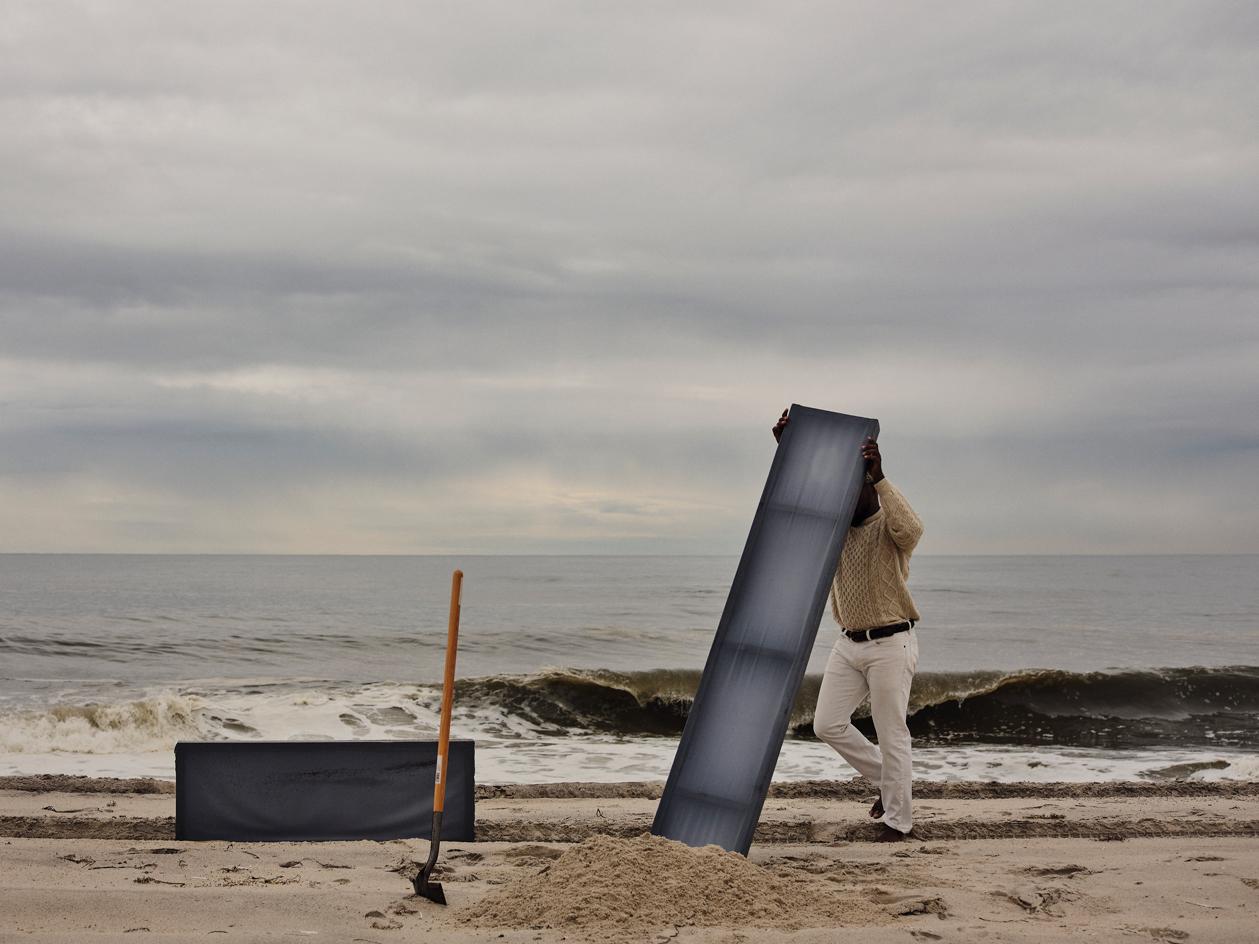
Soon after my son was born, I was watching the sunset and thought about the painters, Agnes Martin, Ad Reinhardt, et al. I was impressed with how bold they were, saying they were gonna make the last paintings. I wanted to be that bold. I wanted to be that unafraid.
As an athlete, banker, punk, and intellectual, I have always questioned this concept of not belonging. I considered all the places I have felt I didn't belong and yet I planted myself there anyway. Then, almost as a metaphor, I installed the silk and wool totems at the beach, a place where they don’t belong. And, yet they did belong and, beyond that, produced something beautiful.
W*: Your Fire Island home and studio are so special. How do they influence your work?
It was built by Horace Gifford, an incredible architect ahead of his time in design and sustainability. He was a beautiful creator with very subversive activism that I am attracted to. He was a master at abstracting notions of expected form like Miles Davis, Jimi Hendrix, or Balenciaga's Demna.
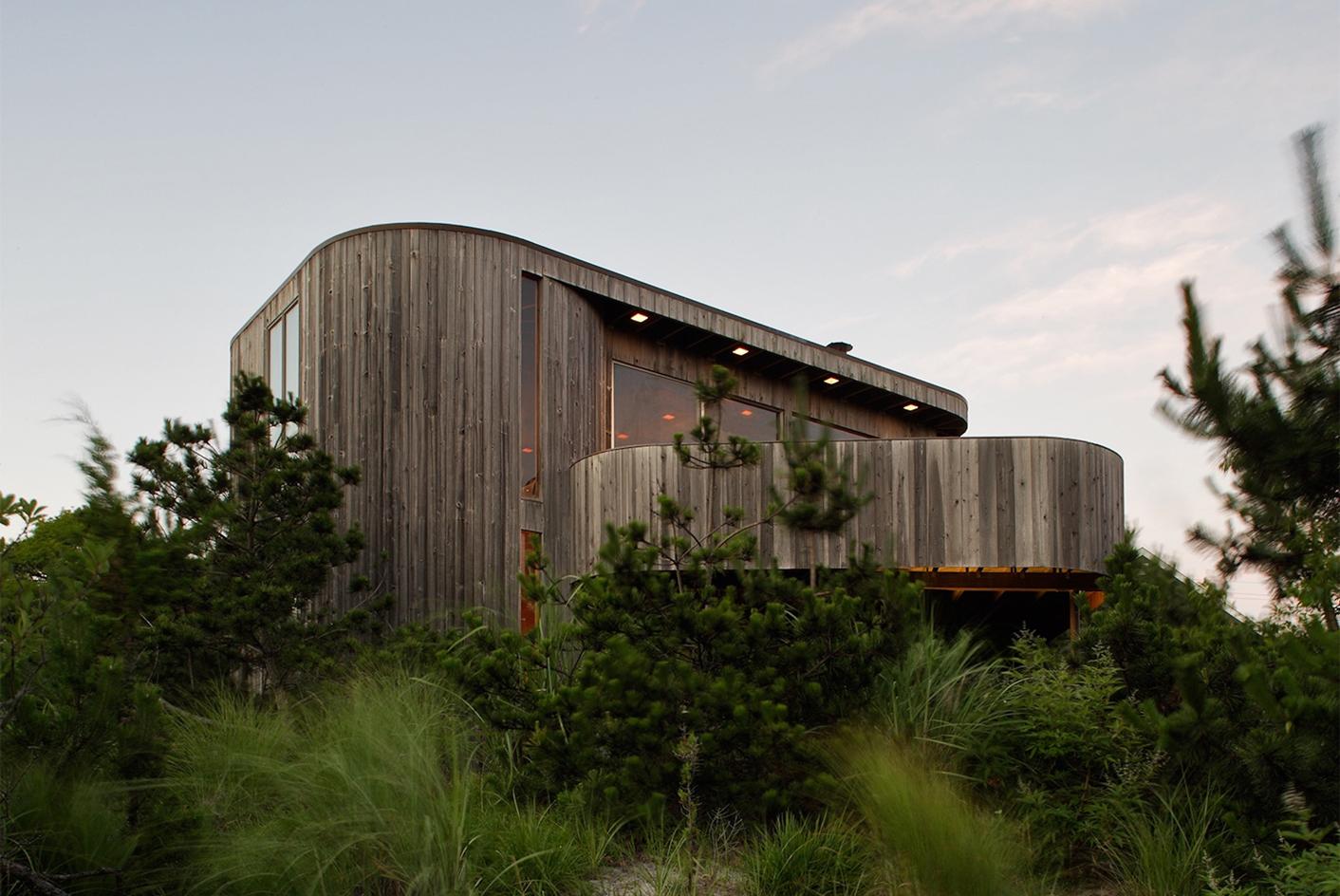
James Perkins' Horace Gifford-designed Fire Island Studio. Photography: Tom Sibley
I am constantly looking for strategies of freedom that allow one to be one’s full self, not restricted by societal identity projections. Gifford was on Fire Island to find freedom, like many homosexuals at that time. In describing the cantilevered closets featured in his homes, he once commented, ‘I’ll give you the most beautiful closets to come out of.’
I love that lightness and use of beauty to combat ugly. Sometimes we have to fight to retain some lightness and joy. It is important to me that his legacy is known along with that of land artists' innovations despite the struggle. Fire Island’s spirit is similarly courageous. Our residents are badasses as we are on a barrier island absorbing all of the storm's force before it hits the mainland.
Fire Island is my Marfa. And, like Marfa, one day I hope to build a place beyond my studio where my sculptures can be seen in their natural element, the place that made them, and me, what we are.
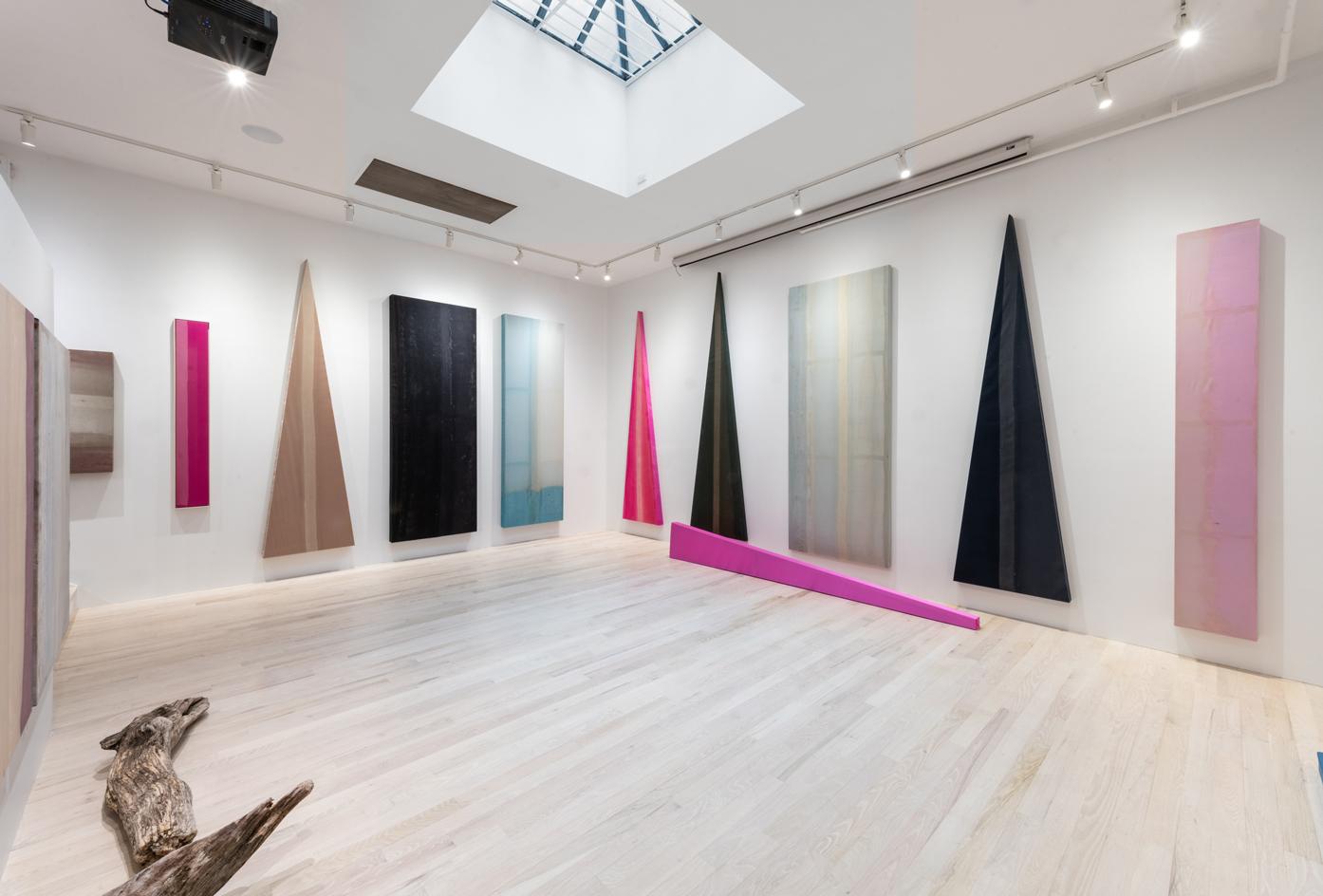
Installation view of James Perkins' ‘Burying Painting’, is on view at Hannah Traore Gallery, New York until 30 July. Photography: Adam Reich
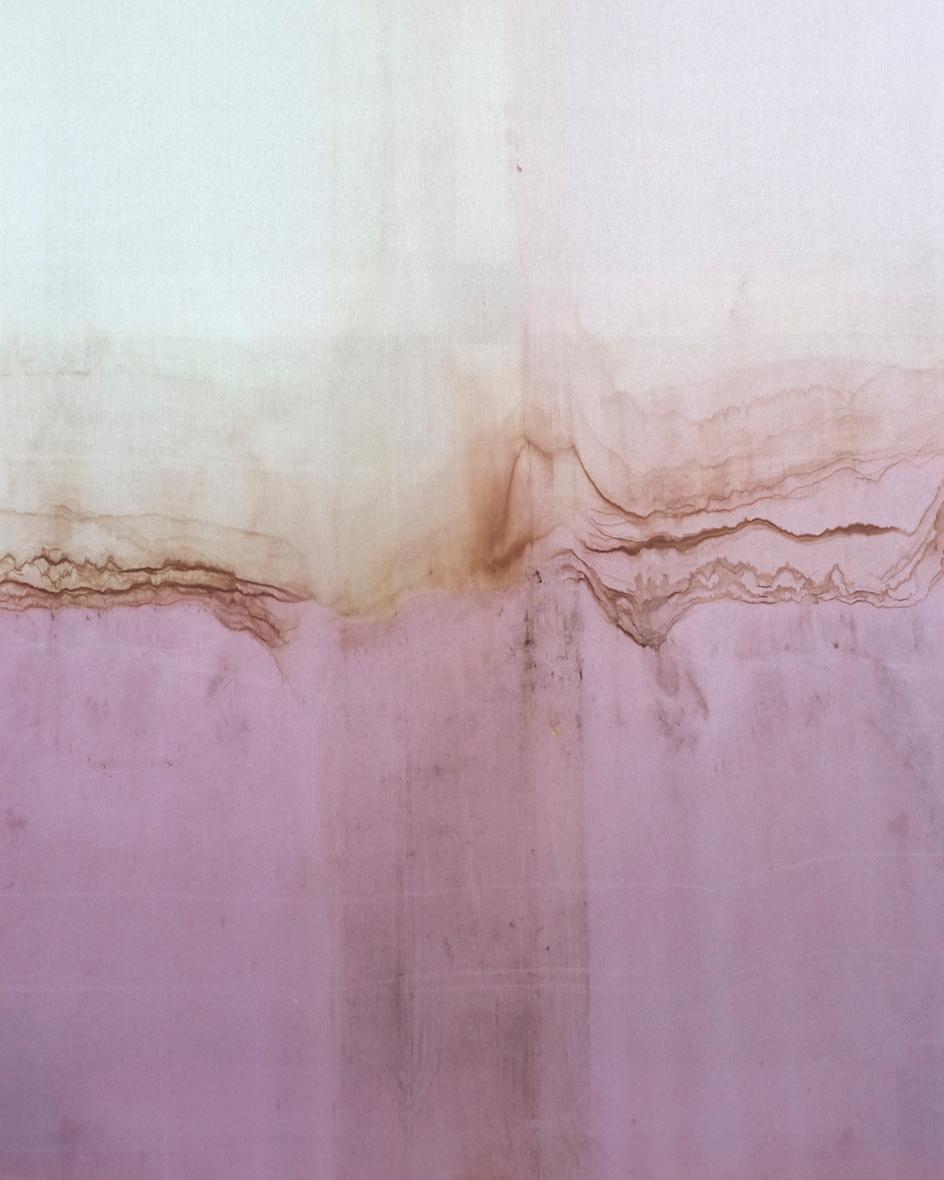
Detail of Tamarisk, 2018, by James Perkings. Photography: Josh Marten
INFORMATION
James Perkins, ‘Burying Painting’, is on view at Hannah Traore Gallery, New York until 30 July 2022. hannahtraoregallery.com
-
 All-In is the Paris-based label making full-force fashion for main character dressing
All-In is the Paris-based label making full-force fashion for main character dressingPart of our monthly Uprising series, Wallpaper* meets Benjamin Barron and Bror August Vestbø of All-In, the LVMH Prize-nominated label which bases its collections on a riotous cast of characters – real and imagined
By Orla Brennan
-
 Maserati joins forces with Giorgetti for a turbo-charged relationship
Maserati joins forces with Giorgetti for a turbo-charged relationshipAnnouncing their marriage during Milan Design Week, the brands unveiled a collection, a car and a long term commitment
By Hugo Macdonald
-
 Through an innovative new training program, Poltrona Frau aims to safeguard Italian craft
Through an innovative new training program, Poltrona Frau aims to safeguard Italian craftThe heritage furniture manufacturer is training a new generation of leather artisans
By Cristina Kiran Piotti